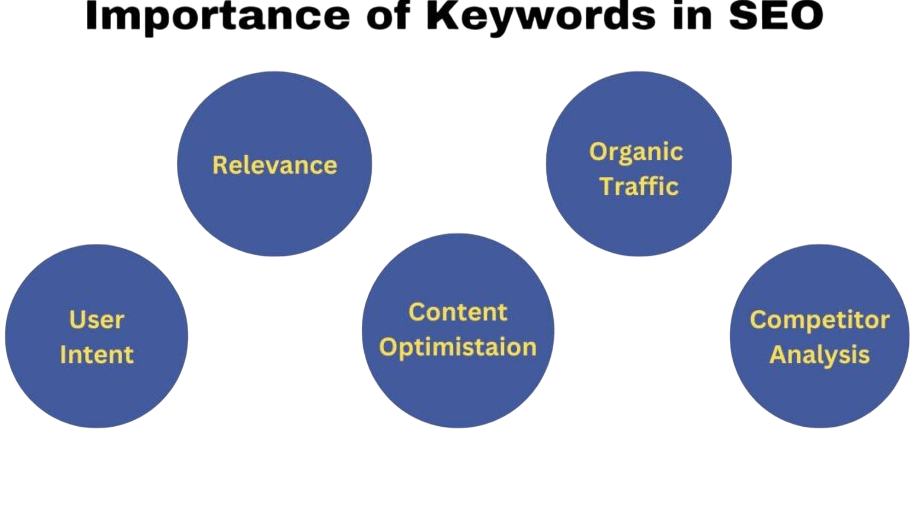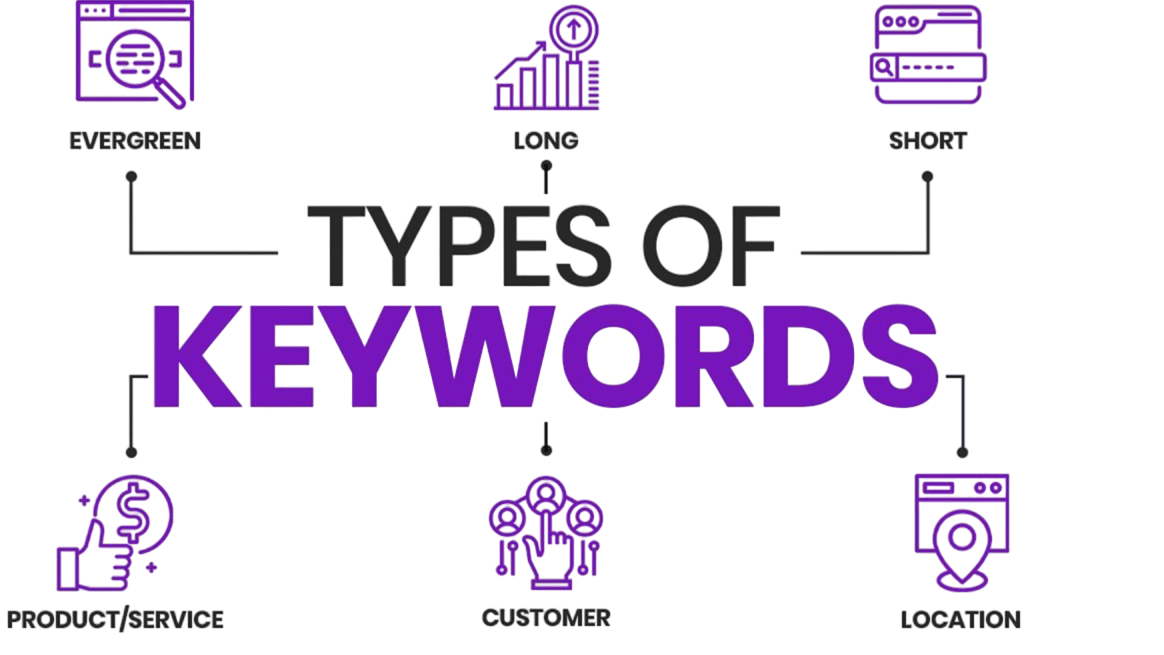
- Introduction to Keyword Research in SEO
- Importance of Keywords in SEO
- Understanding Search Intent
- Types of Keywords
- Using Keyword Research Tools
- Long-tail vs Short-tail Keywords
- Competitor Keyword Analysis
- Analyzing Keyword Difficulty
- Grouping and Mapping Keywords
- Tracking Keyword Performance
- Common Mistakes to Avoid
- Integrating Keywords into Content
- Summary
Introduction to Keyword Research in SEO
Keyword research is the foundational step of any successful SEO strategy. It involves identifying and analyzing the terms that people enter into search engines with the goal of using that data to optimize content, drive organic traffic, and increase visibility. A solid understanding of Digital Marketing Training enables marketers and content creators to align their efforts with actual search behavior. Effective keyword research helps you find the balance between user intent, content relevance, and search engine algorithms. The process goes beyond just finding popular words; it involves understanding your audience, their pain points, and how they search for information online.
Ready to Get Certified in Digital Marketing? Explore the Program Now Digital Marketing Online Training Offered By ACTE Right Now!
Importance of Keywords in SEO
Keywords serve as the bridge between what people are searching for and the content you offer. When used strategically, they help search engines understand the context of your page, improve indexing, and drive targeted traffic to your site.

Without keyword optimization, even well-written content might remain invisible in search engine results pages (SERPs). Keywords also play a crucial role in PPC campaigns, competitive analysis, and trend forecasting. They help uncover market demand and provide insights into the language used by your target audience. The right keywords can attract high-converting traffic, making keyword research not just important, but essential for success in SEO.
Understanding Search Intent
- Search intent refers to the reason behind a user’s query. Is the user looking to buy something (transactional), learn something (informational), or find a specific page (navigational)? Recognizing search intent helps in creating content that satisfies user needs.
- For instance, a query like “best running shoes for women” indicates a transactional intent, whereas “benefits of running” is informational. Matching your keywords and content to the correct intent ensures better engagement, lower bounce rates, and higher rankings strategic alignment emphasized in Types of Content Marketing, where marketers learn to map keyword intent to content formats, optimize for user goals, and structure campaigns that convert across the buyer journey.
- Google’s algorithm increasingly prioritizes search intent, so focusing on it improves your content’s chances of being featured in snippets and ranking high in results.
- Short-tail keywords: Broad and high-volume (e.g., “shoes”).
- Long-tail keywords: More specific and lower-volume but highly targeted (e.g., “best trail running shoes for beginners”).
- LSI keywords: Latent Semantic Indexing terms related to the main keyword.
- Branded keywords: Include brand names (e.g., “Nike shoes”).
- Geo-targeted keywords: Include location (e.g., “shoe stores in Bangalore”).
- Google Keyword Planner: Great for PPC and SEO, offering search volume and competition.
- SEMrush: Offers keyword difficulty, search trends, and competitor insights.
- Ahrefs: Useful for analyzing backlinks and keyword gaps.
- Ubersuggest: Provides suggestions and SEO difficulty.
- Moz Keyword Explorer: Offers keyword suggestions and organic CTR metrics.
- Keyword difficulty measures how hard it is to rank for a specific keyword. Tools assign a difficulty score based on competition level, backlink profiles, and domain authority of existing ranking pages.
- Low-difficulty keywords are easier to rank for, especially for newer websites. High-difficulty keywords often require strong domain authority, high-quality backlinks, and top-tier content.
- Balancing high and low-difficulty keywords ensures steady growth. While it’s tempting to go after high-volume keywords, targeting medium or low-difficulty keywords often yields faster and more sustainable results.
- Once you have a list of relevant keywords, the next step is to group them based on themes, intent, and funnel stage. Keyword grouping helps in organizing content strategies and improving site architecture. For example, keywords related to “beginner SEO guide,” “SEO checklist,” and “SEO for startups” can be grouped under a beginner SEO blog cluster.
- Mapping these keyword groups to specific pages ensures each page targets a distinct set of keywords, avoiding cannibalization. It also helps search engines understand the topical authority of your site.
- Keyword Stuffing: Overusing keywords disrupts readability and leads to penalties.
- Ignoring Search Intent: Targeting the wrong intent leads to poor engagement.
- Focusing Only on High Volume: Ignoring relevance and difficulty affects ROI.
- Neglecting Long-Tail Keywords: Missing out on high-conversion traffic.
- Lack of Content Alignment: Keywords must fit naturally within content.
- Page Title
- Meta Description
- Headers (H1, H2, etc.)
- Introduction and Conclusion
- Alt Text for Images
- URL Slug
- Body Content
To Explore Digital Marketing in Depth, Check Out Our Comprehensive Digital Marketing Online Training To Gain Insights From Our Experts!
Types of Keywords
Each customer persona typically contains key components such as various types of keywords based on length, purpose, and user intent an essential framework for Off-Page SEO, where marketers align short-tail, long-tail, informational, and transactional keywords with persona-driven outreach strategies. By tailoring content and backlink acquisition to match user behavior and search intent, businesses improve relevance, authority, and organic visibility across external platforms.

Understanding and combining various types of keywords helps in building a diverse and comprehensive keyword strategy that attracts traffic across different stages of the buyer journey.
Using Keyword Research Tools
Numerous tools can assist in keyword research by providing data on volume, competition, and related terms. Some of the most popular ones include Google Keyword Planner, Ahrefs, SEMrush, Ubersuggest, and Moz resources that highlight the Benefits of being a Content Marketer, where professionals leverage keyword insights to craft targeted content, boost visibility, and position their brand as a trusted authority in niche domains.
Using these tools helps streamline your keyword research process, uncover hidden opportunities, and monitor performance over time.
Looking to Digital Marketing Training? Discover the Digital Marketing Expert Masters Program Training Course Available at ACTE Now!
Long-tail vs Short-tail Keywords
Short-tail keywords are generic and have high search volumes but are often highly competitive. They are good for brand visibility but may not yield high conversion rates. Long-tail keywords, on the other hand, are more specific, less competitive, and often indicate clear user intent, making them more suitable for attracting quality traffic a concept thoroughly explored in Digital Marketing Training. For example, “data analytics” (short-tail) might attract a broad audience, but “best online data analytics course with certification” (long-tail) targets users ready to take action. An effective SEO strategy incorporates Long-tail vs Short-tail Keywords types, using short-tail keywords for broad reach and long-tail keywords for deeper engagement and conversions.
Competitor Keyword Analysis
Analyzing your competitors’ keyword strategies helps identify gaps and opportunities. Start by identifying who your competitors are, then use tools like SEMrush, Ahrefs, or SpyFu to uncover the keywords they’re ranking for. Look at their top-performing pages, backlink profiles, and content structure competitive analysis tactics central to Inbound Marketing, where marketers use tools like Ahrefs to identify high-performing content, evaluate backlink quality, and optimize site architecture for organic traffic growth and lead generation. This process helps you understand what’s working in your industry and informs your content planning. It also helps you discover keyword opportunities they may have missed or underutilized. Competitive analysis is not about copying but learning and improving upon what already exists.
Preparing for Digital Marketing Job Interviews? Have a Look at Our Blog on Digital Marketing Interview Questions and Answers To Ace Your Interview!
Analyzing Keyword Difficulty
Grouping and Mapping Keywords
Tracking Keyword Performance
Monitoring how your keywords are performing is crucial to adjusting and refining your strategy. Tools like Google Search Console, SEMrush, and Ahrefs allow you to track rankings, CTRs, impressions, and traffic. Regularly checking keyword metrics helps you identify what’s working and where to improve performance insights that align with Google’s Match Type Changes are Manged, where advertisers learn how phrase match and broad match modifiers have evolved, how to adapt bidding strategies, and how to use analytics platforms to monitor keyword behavior under the new matching logic. For instance, if a keyword has high impressions but low clicks, you may need to improve your title or meta description. Tracking also helps you spot trends and seasonal variations. Establish a routine check to ensure your SEO efforts remain aligned with evolving search behavior.
Common Mistakes to Avoid
Let’s consider two simplified examples:
Keyword research can go wrong if not executed properly. Here are some pitfalls to avoid:
Avoiding these mistakes ensures a more strategic and effective keyword implementation.
Integrating Keywords into Content
After identifying the right keywords, it’s essential to integrate them effectively. Keywords should appear in:
However, the placement should feel organic. Focus on creating valuable content that naturally includes your target keywords. Keyword density should be maintained moderately to avoid penalties. Additionally, using semantic keywords and synonyms helps boost contextual relevance and voice search compatibility.
Summary
Keyword research is a critical pillar of SEO that bridges user behavior with content strategy. It involves understanding search intent, analyzing competition, using specialized tools, and strategically integrating keywords across your content core skills emphasized in Digital Marketing Training. By differentiating between keyword types, evaluating difficulty, and continuously tracking performance, businesses can create optimized content that ranks well and meets user needs. Mastering keyword research empowers marketers to improve visibility, drive organic traffic, and achieve long-term success in the digital landscape.




